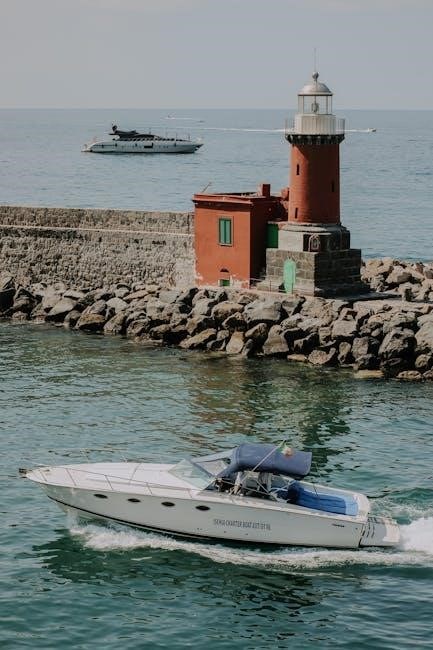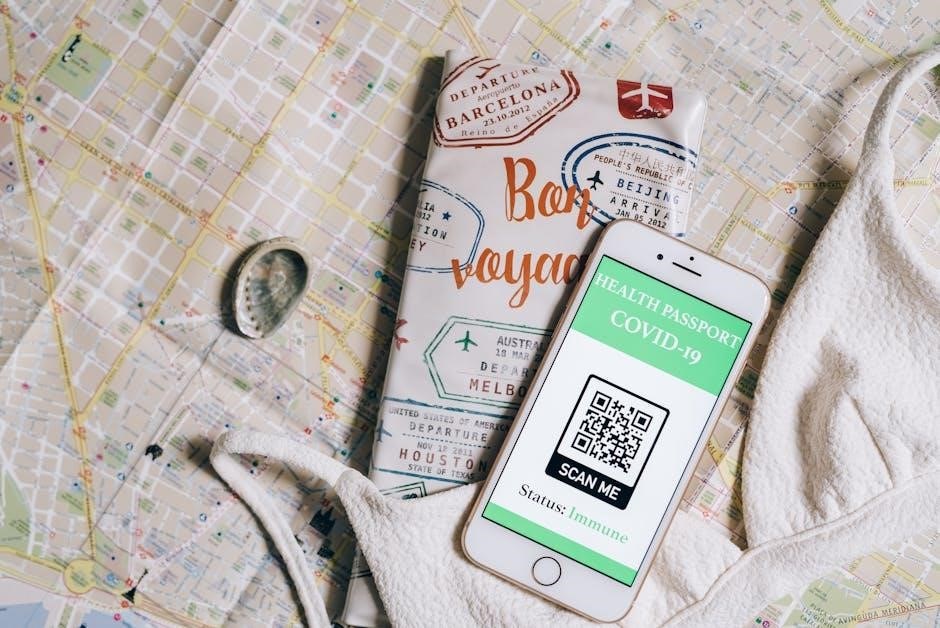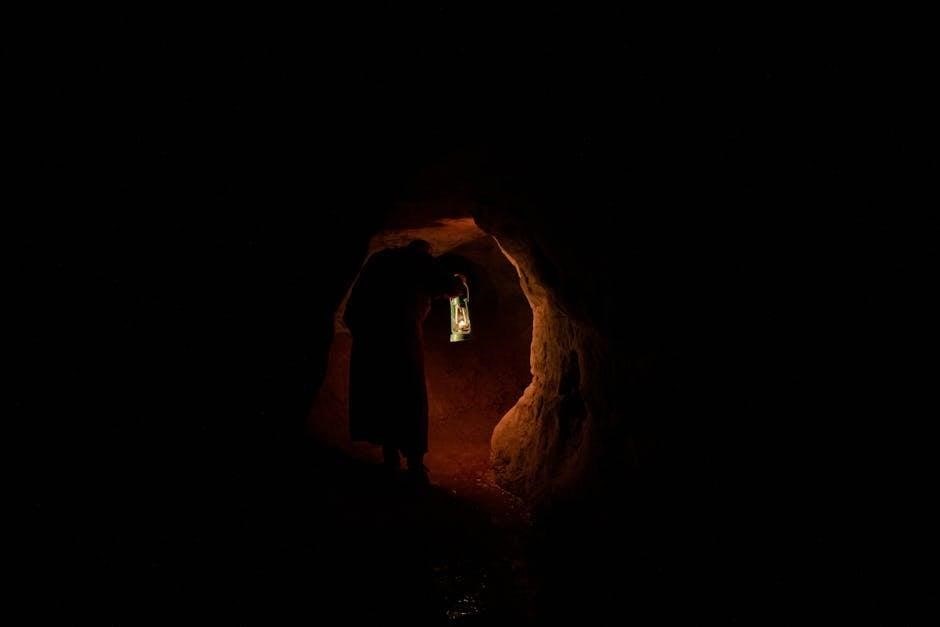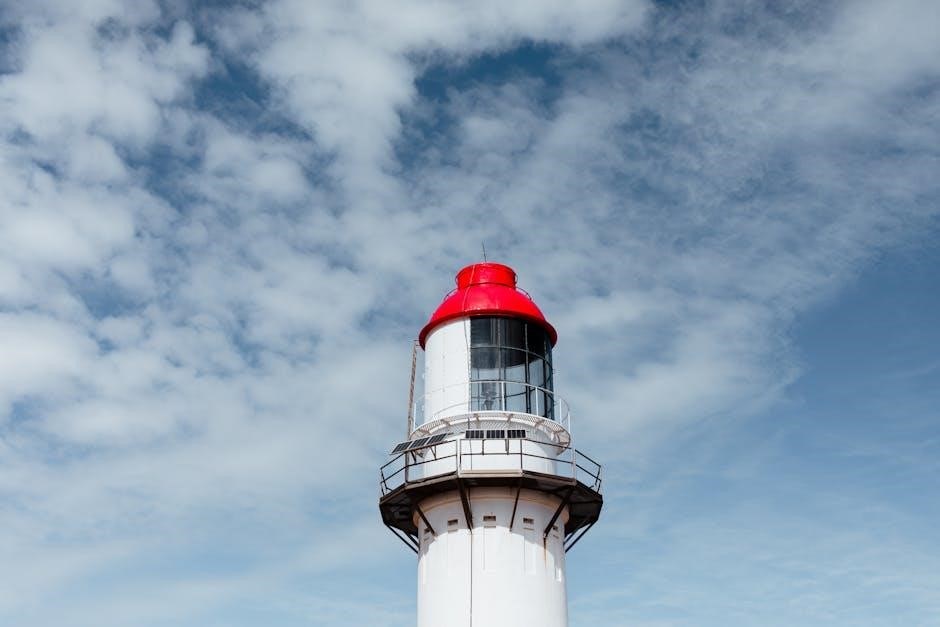Understanding SOS: The Universal Distress Signal
The SOS signal, represented by the Morse code sequence “․․․ — ․․․,” is a globally recognized distress call; Originally used in maritime and telegraph communications, it was adopted as a universal emergency signal due to its simplicity and recognizability․ Unlike other codes, SOS was chosen for its distinct and unforgettable pattern, ensuring it stands out in critical situations․ While often misunderstood as an acronym, SOS is simply a unique sequence designed for clarity․ Its effectiveness lies in its ability to transcend language barriers, making it a vital tool for signaling help in emergencies worldwide․
History and Origins of SOS
The SOS signal, “․․․ — ․․․,” originated in the early 20th century as a universal distress code in Morse code․ It was officially adopted in 1906 by the International Radiotelegraph Convention, replacing earlier codes like “CQD” and “CDF․” SOS was chosen for its simplicity, distinctiveness, and ease of recognition, even in noisy conditions․ Unlike other codes, SOS is not an acronym but a unique sequence designed to stand out․ Its adoption became mandatory by 1908, ensuring global consistency in emergency communication․ Over time, SOS has remained a critical tool in maritime, aviation, and terrestrial emergencies, symbolizing hope and urgency worldwide․ Its enduring relevance underscores its effectiveness in critical situations․

Morse Code: The Foundation of SOS
Morse code, developed by Samuel Morse and Alfred Vail, is a communication system using dots and dashes to represent letters and numbers․ The SOS signal, “․․․ — ․․․,” translates to three dots, three dashes, and three dots in Morse code․ This sequence was chosen for its simplicity and recognizability, making it a reliable method for signaling distress․ Unlike other codes, SOS is not an acronym but a unique pattern designed to stand out, even in noisy conditions․ Its adaptability across various mediums, such as sound or light, ensures its effectiveness in emergencies․ Beyond SOS, Morse code can also spell other essential words like HELP (․ ․ ․-․․ ․-․ ․ ․ ․) and FOOD (․․․ ․ ․ ․․․), expanding its utility in critical situations․

Why SOS is Effective in Emergency Situations
SOS is universally recognized as a distress signal, making it highly effective in emergency situations․ Its simplicity and repetitive structure ensure it stands out, even amidst chaos․ Unlike other signals, SOS is not language-dependent, allowing it to transcend cultural and linguistic barriers․ Its distinct pattern of three dots, three dashes, and three dots is easily identifiable, whether transmitted via sound, light, or Morse code․ Additionally, SOS has psychological impact, immediately conveying urgency and the need for help․ Its versatility enables use in various scenarios, from maritime emergencies to wilderness survival․ This widespread recognition and ease of use make SOS a reliable and indispensable tool for signaling distress globally․

Modern Technology in Emergency Response

Modern technology has transformed emergency response through innovations like iPhone’s Emergency SOS, GPS location sharing, and smart wearables, ensuring faster assistance and enhanced connectivity in crises․
The iPhone Emergency SOS Feature
The iPhone Emergency SOS feature provides a quick and discreet way to call for help in critical situations․ By pressing and holding the side button and a volume button, users can automatically contact emergency services․ This feature also sends the user’s location to designated emergency contacts, ensuring prompt assistance․ Available in countries like Australia, Canada, and the United States, it operates even without cellular network connectivity․ The feature is especially useful in situations where making a visible call might be unsafe, offering a silent yet effective way to signal distress․ Its integration with GPS further enhances location accuracy, making it a vital tool for personal safety and emergency response․
GPS and Location Sharing in Crisis Situations
GPS and location-sharing technologies play a crucial role in emergency response by enabling precise tracking of individuals in distress․ When activated, these systems transmit real-time coordinates to emergency services, significantly reducing response times․ Modern devices, including smartphones and wearables, incorporate GPS capabilities, allowing users to share their exact location during crises․ This feature is particularly vital in remote or unfamiliar areas where describing one’s position is challenging․ Emergency contacts can also receive these coordinates, ensuring a coordinated effort to provide assistance․ By leveraging GPS data, rescue teams can pinpoint locations more efficiently, making it a cornerstone of modern emergency response systems․ This technology enhances safety and expedites help in critical situations․
Smart Devices and Wearables for Safety
Smart devices and wearables have revolutionized personal safety by integrating emergency response features․ Many modern smartphones, like iPhones, offer Emergency SOS, which discreetly contacts emergency services with a few button presses․ Wearables, such as smartwatches, often include fall detection and SOS capabilities, automatically alerting emergency contacts if a serious incident occurs․ GPS-enabled devices can share precise locations, aiding rescue teams in reaching victims quickly․ These tools are particularly valuable for solo travelers, hikers, and individuals in high-risk professions; By leveraging advanced technology, smart devices and wearables provide an added layer of security, ensuring help is just a touch away in critical moments․ Their portability and ease of use make them indispensable for modern safety needs․

Preparing for Emergencies
Preparing for emergencies involves assembling a well-stocked emergency kit, creating a family escape plan, and regularly practicing safety drills to ensure readiness in crisis situations․

Building an Emergency Kit
Building an emergency kit is essential for preparedness, ensuring you have vital supplies during a crisis․ Include essentials like water (at least 1 gallon per person per day), non-perishable food, a first aid kit, flashlights, batteries, and a portable charger for devices․ Add personal items such as medications, extra clothing, and important documents like insurance cards and IDs․ Incorporate communication tools like a whistle to signal for help and a radio for updates; Tailor the kit to your household’s needs, including pet supplies and baby essentials if applicable․ Regularly update and check expiration dates to maintain readiness for any emergency situation․
Practicing Safety Drills and Response Plans
Practicing safety drills and response plans is crucial for effective emergency preparedness․ Regularly conducting drills ensures that everyone knows their role and can act swiftly during a crisis․ Start by identifying escape routes, safe meeting points, and emergency contact information․ Simulate scenarios like fires, earthquakes, or evacuations to test readiness․ Review and update your plan annually or when circumstances change, such as adding new household members․ Communication is key—ensure all participants understand the steps and their responsibilities․ Incorporate technology, such as emergency SOS features, into your strategy for quick assistance․ Consistent practice helps build confidence and ensures a coordinated response, making it second nature during real emergencies․

Communication Strategies in Crisis
Effective communication in crises involves clear, concise methods to signal distress․ Verbal cues, like shouting for help, and non-verbal signals, such as waving or using reflective objects, are essential․ Utilizing Morse code for SOS, HELP, and FOOD ensures precise messaging․ Modern tools, like the iPhone’s Emergency SOS feature, enable quick alerts to emergency contacts․ Combining these strategies enhances visibility and ensures rapid response, crucial for rescue teams to locate those in need efficiently․
Using Morse Code for HELP and FOOD
Morse code extends beyond SOS, offering essential communication for specific needs․ The word HELP translates to ․ ․ ․ ․ ー ․ ․ ․ ․ in Morse code, while FOOD is represented by ․․․ ․ ․ ․ ․ ⎯ ․․․ ․ ․ ․ ․․ These sequences provide clarity in emergencies, allowing individuals to signal for assistance beyond a general distress call․ For instance, HELP can indicate a need for immediate aid, while FOOD signals a requirement for sustenance․ These codes are simple yet effective, ensuring messages are conveyed accurately․ By mastering these sequences, individuals can enhance their ability to communicate in crisis situations, whether in wilderness survival, maritime emergencies, or other high-stakes scenarios․ This precision in signaling can be lifesaving, ensuring rescue teams understand the exact nature of the distress․
Verbal and Non-Verbal Signals for Assistance
Effective communication in emergencies often relies on both verbal and non-verbal signals․ Verbal cues, such as shouting “HELP” or “FOOD,” can convey specific needs, while non-verbal signals like waving arms or using reflective surfaces can grab attention․ In wilderness scenarios, firing three shots or honking a vehicle’s horn three times is a recognized distress signal․ Additionally, modern tools like the iPhone’s Emergency SOS feature allow users to discreetly call for help, while devices like the Apple Watch can detect falls and alert emergency contacts․ Combining these methods ensures a higher likelihood of being noticed and assisted in critical situations, making them essential skills for anyone venturing into remote or unsafe areas․

Safety in Specific Scenarios

Vehicular Emergency Protocols
Honking a vehicle’s horn three times or flashing headlights can signal distress․ Stranded drivers should use flares or attach a red cloth to the antenna for visibility․ GPS and emergency contact features enhance response efficiency, ensuring timely assistance in critical situations․
Wilderness Survival and Signaling
In wilderness emergencies, signaling for help is crucial․ The universal SOS signal, “․․․ — ․․․,” can be transmitted using light flashes, whistle blasts, or smoke․ Hunters in distress can fire three shots into the air, while stranded drivers can honk three times and flash headlights․ Building rock piles or creating large, visible patterns on the ground can also signal for rescue․ Signal mirrors are effective for reflecting sunlight toward rescuers․ GPS devices and emergency beacons are modern tools that enhance location sharing and rapid response․ Always stay visible by wearing bright clothing and carrying flares or reflective materials․ Preparation, including carrying an emergency kit, is key to survival and effective signaling in remote areas․
Vehicle Emergency Protocols
Vehicle emergencies require immediate and clear signaling for help․ If stranded, honk the horn three times and flash headlights three times to signal distress․ Attach a red cloth to the antenna or hang it from a window for visibility․ Use reflective triangles, flares, or emergency lights to alert others․ In remote areas, stay with the vehicle and use a whistle to signal rescuers․ Modern vehicles may have emergency beacons or GPS devices to share your location․ If equipped, activate the iPhone Emergency SOS feature discreetly․ Always keep an emergency kit with supplies like water, blankets, and a first-aid kit․ Stay visible, avoid wandering, and wait for professional assistance to ensure safety and efficient rescue․
